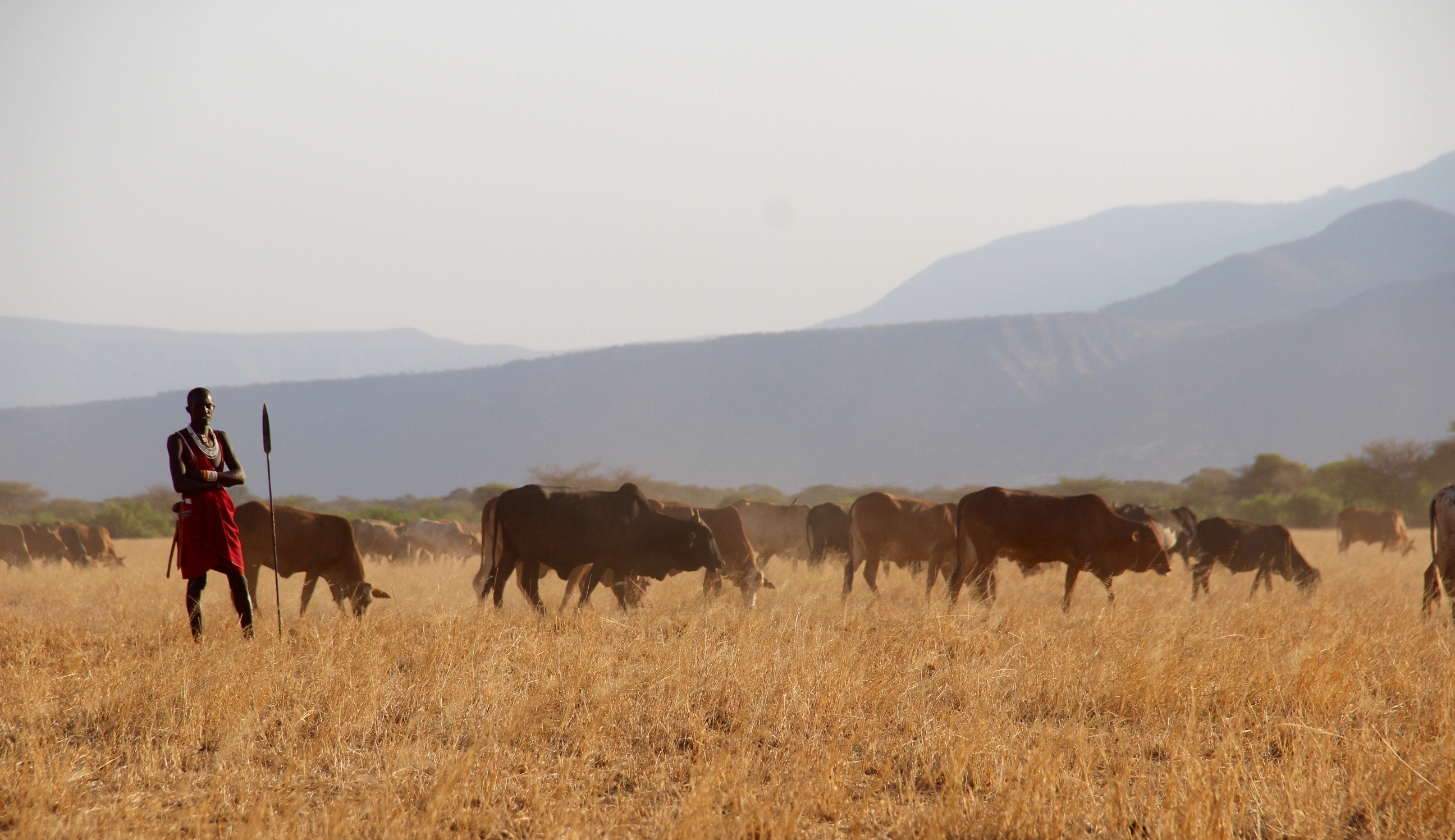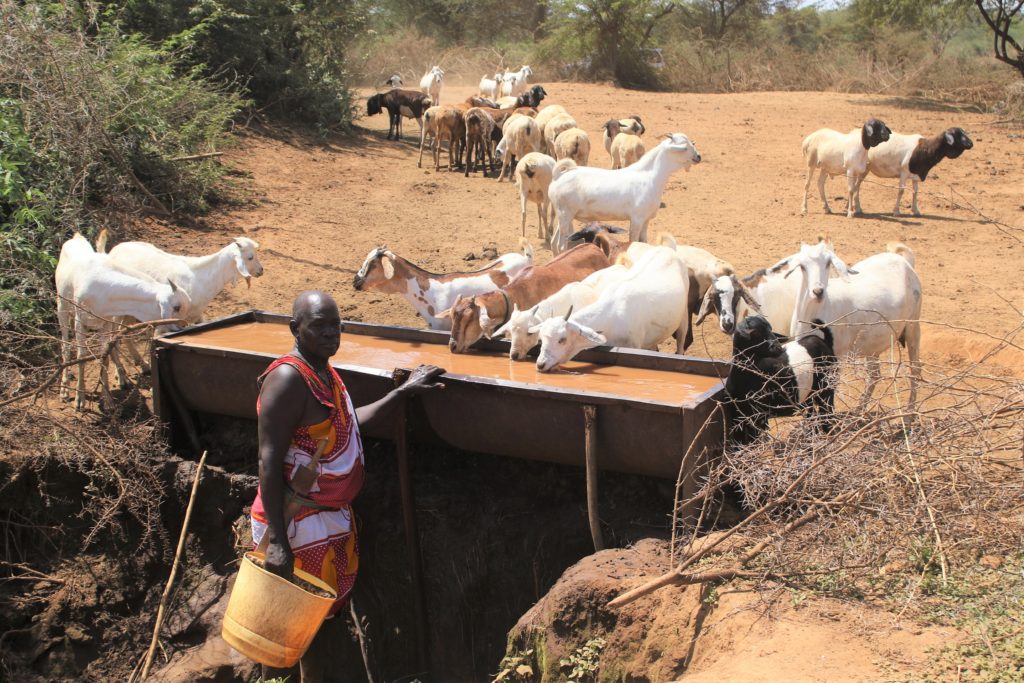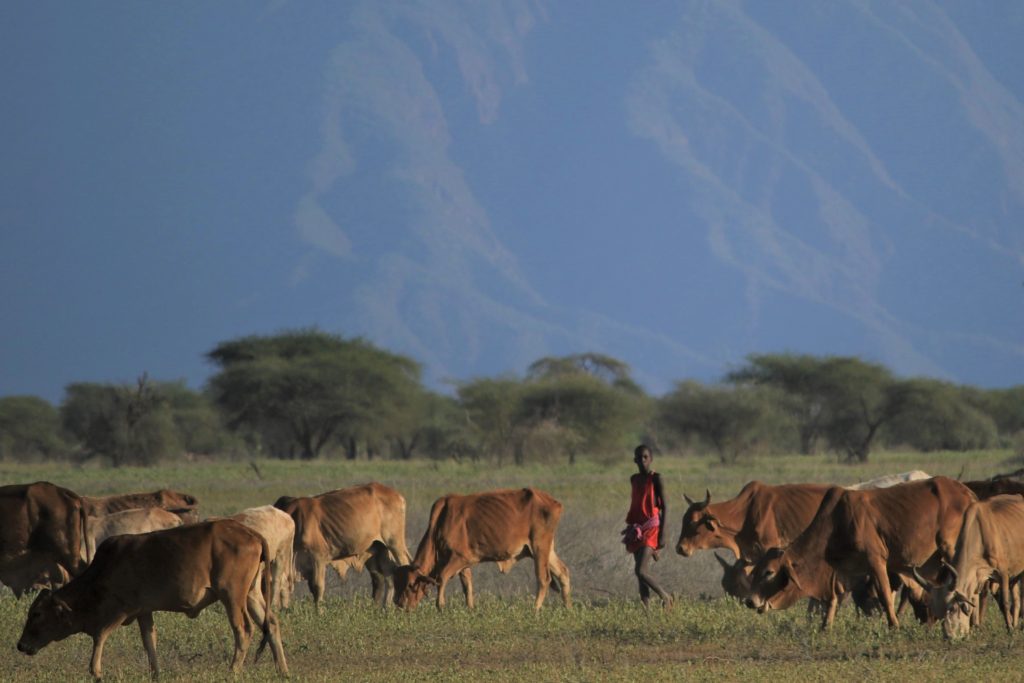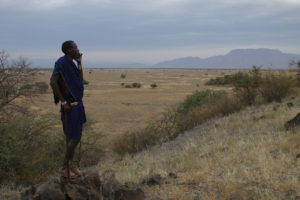Conditional Empowerment: Shifting Community Land Rights for Kenyan Pastoralists
 Maasai pastoralist overseeing their herd on Shompole community land. Credit: Kathleen Godfrey
Maasai pastoralist overseeing their herd on Shompole community land. Credit: Kathleen Godfrey
Pastoralism has been a key feature of East African savannas for millennia. Herders in Kenya practice mobile lifestyles as a way of accessing sporadic rainfall and avoid depleting the resources of any single area. However, their claims to their lands have come under threat since the beginning of British colonialism at the turn of the 20th century. Since then, the government has sought to restrict, sedentarize, or evict the herders from the resource bases on which they base their livelihoods. The most recent development in this struggle was the passing of the Community Land Act in 2016, which gave locals the ability to formalize their customary claims to land. To understand why this is significant and the challenges it poses, a better understanding of how communities have historically laid claim to their lands in Kenya is crucial.
Group Ranches: Testing the Waters
After Kenya’s independence in 1963, the new government set about formalizing ownership over previously held British Crown land. Beginning in 1964, the newly-formed Kenyan government rolled out the Group Ranch model, which vested land ownership in communities in the hope that it would allow them to modernize livestock practices and avoid overgrazing. Problems arose as pastoralists, suddenly confined to the borders of their group ranch, were no longer able to access the geographically dispersed pastures necessary to prosper in such a dry climate. Furthermore, the elected committees which led the Group Ranches were made up of mostly young men, defying societal norms in which elders were the traditional seats of authority. Along with a number of other challenges, this led many of the Group Ranches to subdivide, as well as privatize and distribute land amongst Group Ranch members. The effects of this redistribution were often detrimental and widespread in scope, and affected everything from pastoral livelihoods, to ecosystem wellbeing, to group ownership of ancestral lands. In the words of Shadrack Omondi, the executive director of the Resource Conflict Institute, “Through corrupt means, they start subdivision and all manner of things and before you realize, the communities have lost their land.”

Though there were multiple issues with the Group Ranch system, its main problem was its lack of application. Many communities failed or chose not to incorporate themselves as Group Ranches, while others’ rights were simply ignored. This lead to numerous accusations of corruption and land grabbing. The Lake Turkana Wind Power Project is an example of this. The project developed wind turbines on Turkana lands without adequately compensating the local Turkana people, nor consulting with them beforehand. The Turkana’s lack of legal ownership allowed the wind turbine company to deal directly with the county government, and consequently lease thousands of acres of community land. Pastoralists living on the site lost their grazing rights, and many were evicted. This situation is not uncommon, as local government bodies have been known to neglect their responsibilities and conduct corrupt dealings which dispossess pastoralists of their land.
Community Land Act: Conditional Empowerment
After decades of challenges, Kenya’s 2010 Constitution began to address concerns by asserting that “all land in Kenya belongs to the people of Kenya collectively as a nation, as communities and as individuals.” In line with this, it called on Kenya’s Parliament to create new legislation that would more easily allow communities to claim legal ownership over their lands. This resulted in the 2016 Community Land Act, which provides a means by which communities can obtain legal group tenure over their land. To do so, communities must make a list of members and submit their proposal to the government Registrar. This begins a process of surveying, demarcating, and eventually registering title in the community’s name. The aim of this Act was to create a simpler, less restrictive process in order to encourage more communities to legalize their communal land tenure.

The key problem with the new Act, however, is its reliance on government institutions to act benevolently towards pastoralists. Kenya has a long track record of corruption, which often results in the eviction and dispossession of the poor. The Act’s failure to address this could handicap its ability to empower rural landowners. For example, the Act allows the national or county governments to reserve land “for the promotion or upgrading of public interest.” The legal ambiguity here relies on varying levels of government to do right by communities, and throws into question the security of their land title. Furthermore, the process required to secure that title relies on the government’s political will. With no required timeframe, the process of surveying, demarcating, and registering land can last an indefinite period. Meanwhile, the land is held in trust by counties which have frequently proved untrustworthy.
Looking Forward

The Community Land Act provides a legal path for pastoral peoples to secure their futures. However, it also relies on institutions that have historically displaced and taken advantage of pastoralists to make this possible. The most powerful tool communities have may be their ability to organize and protest, and pressure the government to fulfill its promises and not stray from its stated intent. Where institutions fall short, pastoralists must turn towards civil society in order to shape political will and keep their governments accountable, so that they may finally realize their claims to their ancestral lands.
 Liam Ragan is a McGill student studying anthropology and environment. His main academic interests are conservation and how communities can be empowered to be stewards over and benefit from their natural resources. This has led him to work with Indigenous communities in both the Pacific North West and the South Rift of Kenya in their efforts to strike a balance between environmental sustainability and livelihood development.
Liam Ragan is a McGill student studying anthropology and environment. His main academic interests are conservation and how communities can be empowered to be stewards over and benefit from their natural resources. This has led him to work with Indigenous communities in both the Pacific North West and the South Rift of Kenya in their efforts to strike a balance between environmental sustainability and livelihood development.
Edited by: Thea Koper
